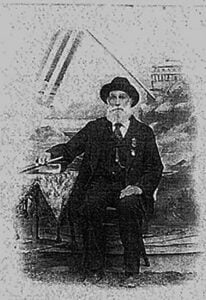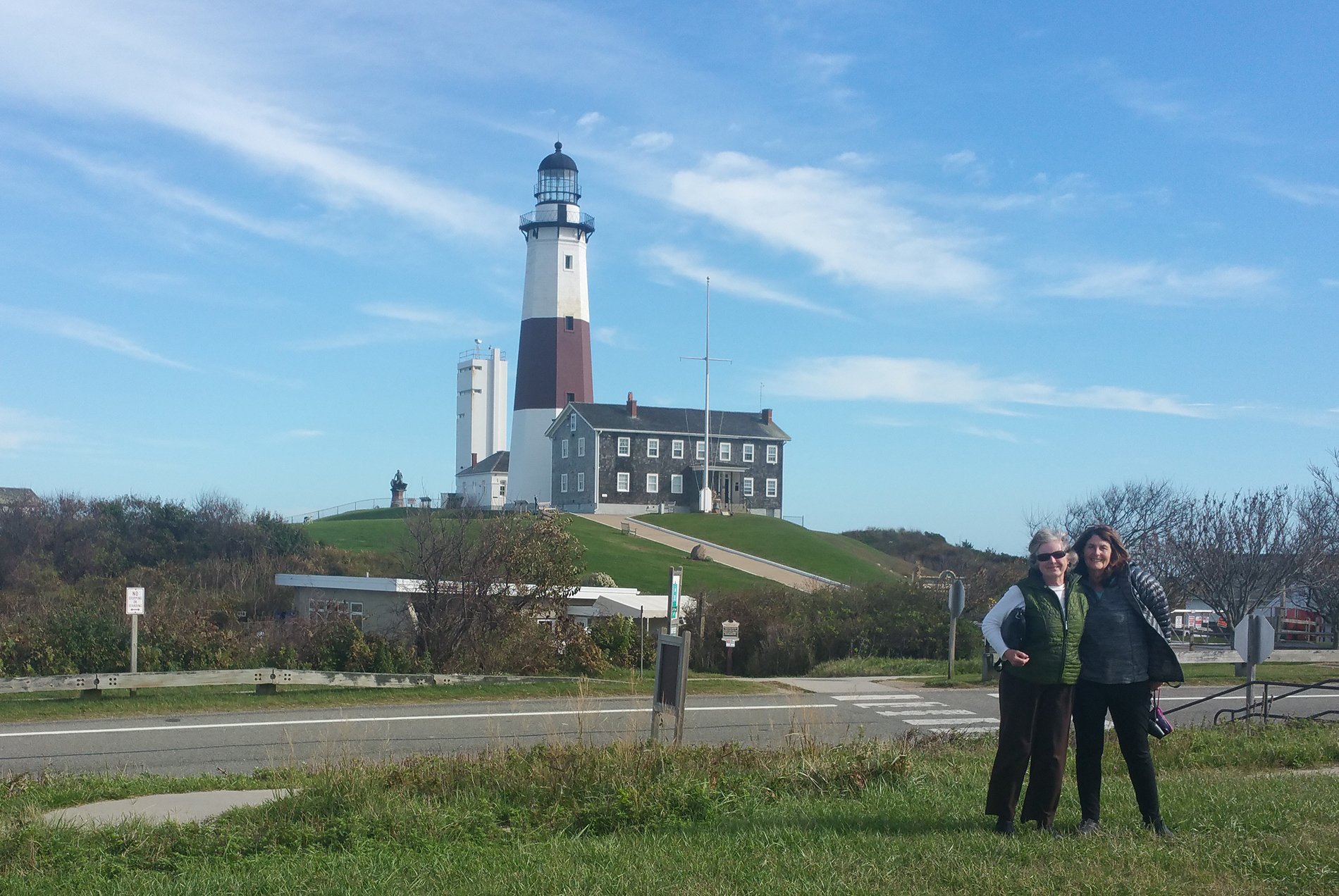 Photograph of Francis Ward Lewis. Courtesy of the California History Room, California State Library, Sacramento, California.
Photograph of Francis Ward Lewis. Courtesy of the California History Room, California State Library, Sacramento, California.
When I was growing up, my father would sometimes solemnly remind me to remember Francis Ward Lewis. I would just nod absentmindedly in response. I don’t recall him explaining who this man was or why he was important—I’m not sure that he even knew himself. But for some reason, it was vital to him that I remember and honor this name.
Later, when I was in my forties, my paternal grand aunt Em causally mentioned that Francis Ward Lewis (17 July 1817¬-9 November 1906) was her grandfather. Finally, I knew how he and I were linked. She recounted that on the Fourth of July, he would march in his uniform in the local parade in Concord, California, and then return home to set off a canon from the roof of his home. He did sound like an interesting individual. So, when I began my genealogy research, he was naturally the first relative I sought out.
As I researched my paternal great-great-grandfather, I was surprised to encounter some of his other descendants, previously unknown to me, who had also been told to “remember Francis Ward Lewis.” Despite the shared family mythology, none of us knew much about him. Together, we eagerly shared our clues and combined our research to discover his identity and his importance in our lives. Cousin Paul shared a note that his mom had written, stating that at one time he had sailed on the brig Elizabeth. Unfortunately, she did not list a source for this information. Pam Lewis, a cousin by marriage, uncovered his “Reminiscences” in the California State Library, which he had written shortly before his death in 1906. The fourteen-page memoir recounted his life following his 1846 arrival in California. Lucky for us, it included his photograph as an old man. As we read his thoughts, it seemed as though we were sitting at the knee of a fascinating, kind elder as he reflected on his adventures and times past.
But what of his life before he landed in California? Fortunately for us, accompanying the “Reminiscences” was a form from the California State Library which Francis had completed, and from which we gained cursory information about his origin. Francis was the son of Isaac Lewis, a schooner captain out of Islip, Long Island, and his wife Almeda Wheeler Lewis (1788-1867). Almeda was the descendant of Wheeler and Blydenburgh families, who were early settlers of Suffolk County, Long Island. Sadly, Isaac died when Francis was only two weeks old. He is buried in the local Hauppauge Methodist Church cemetery, where his gravestone lists birth and death dates (1779-1817) and little else. He may have had a son, Isaac W. Lewis (1802-1852), from an earlier marriage. Isaac himself remains a haunting enigma.
Sometime after 1824, Francis’ mother, Almeda, married a successful local farmer, Daniel Hubbs (1769-1863), a widower with children older than Francis. Any details about his life with this new blended family remain unknown. Though he was home-schooled up to the eighth grade, as the youngest child in this family his future opportunities may have been slim. In any case, he went to sea in 1836 at the age of nineteen, and it seems that he never returned to Long Island. By 1845, he was the third mate on another ship, the brig Elizabeth, as he made his final journey from New England to California. He soon became first mate on another ship. He took a short time away from the sea in 1848 to try his luck in the newly-discovered California gold fields, but quickly returned to sea and became a captain. He sailed his brig Malek Adell up and down the Mexican and California coasts, participating in the growing California commerce. Tragically, around 1853 he lost his ship in a violent storm, and he and his wife barely survived the wreck. By 1855, he left his life at sea to become a farmer.
Francis married his wife in 1850, a girl from Santa Barbara named Maria Emigidia Ramona Guevara (1833-1876), and together they established the California Lewis line of my family. Any connection from this line to Long Island seems to have been severed completely. To the best of our knowledge, no one in our family had returned to his birthplace in Hauppauge since Francis left. Curiosity piqued, I set off for Long Island in 2016 with two of my Lewis cousins, Pat and Paul, to learn more about the mysterious man who emerged from the sea over 170 years ago.
We explored the full length of Long Island, to develop a sense of the lost time, place, and family of Francis. When visiting the Long Island Maritime Museum, we learned the history of Long Island’s oyster industry from Islip’s historian, George Munkenbeck. It became obvious why Francis had been so successful in his business, shipping oysters from Baja California to the restaurants of Northern California. He had grown up near shores rich with oysters.
We then located the Wheeler Family Burial Ground behind a relatively new office building. As a young boy, how often had Francis made the same pilgrimage? Later, we visited the Hauppauge Methodist Church which his Wheeler kin helped found, and where he probably worshipped as a boy. We drove by the Blydenburgh County Park and mused about how close he might have been to his many relatives. We also spent time at the Cold Spring Harbor Whaling Museum, Suffolk County History Society, and the Sag Harbor Maritime and Whaling Museum, to try to understand the draw of the sea and get a sense of the conditions that Francis might have experienced.
Though we did not find any long-lost cousins during our journey, we three descendants bonded more closely. Probably the most poignant moment occurred as we stood together at the Montauk Point Lighthouse and gazed out to sea. We shared the same view Francis had seen over two hundred years earlier, when he first sailed away from Long Island and toward his many adventures. The world was beckoning him to explore and eventually establish a vibrant family in California. I knew then that my father was right—Francis Ward Lewis was a name to be remembered and honored.
